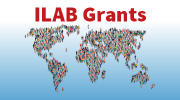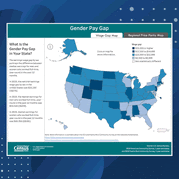U.S. Department of Labor |
March 18, 2022 |
| |||||||||||||||||||||||||||||||||||||
 |
The following GAIN reports were released on March 17, 2022. _______
Burma: Burma Releases Labeling Order for Prepackage FoodThe Burmese Government published new labeling requirements for prepackage food on January 20, 2022. An unofficial translation of the original order is attached to this report.
China: Oilseeds and Products AnnualRising feed demand coupled with limited availability and higher prices for protein-rich substitutes is expected to increase China’s soybean imports to a record forecast 100 million metric tons (MMT) in Marketing Year (MY) 22/23. Estimated soybean imports for MY 21/22 are reduced to 95 MMT from the previous Post estimate on continuing weak demand in the swine and poultry sectors and announced plans to auction state reserves. Oilseed production is forecast to increase slightly to 62.4 MMT in MY 22/23 on strong domestic prices and government incentives.
Ghana: Ghana's Agricultural Subsidy ProgramThe Government of Ghana is pursuing an import substitution agenda regarding rice and chicken meat. Two key policies that will provide subsidies to farmers engaged in rice, corn, sorghum, soybean, and broiler production have been rolled out.
India: Livestock and Products Semi-annualFAS New Delhi forecasts carabeef (which is derived from the Asian domestic water buffalo) and beef (bovine) production to rise in 2022 to approximately 4.5 million metric tons (MMT), an increase of nearly seven percent from the market year (MY) 2021 estimate of 4.2 million metric tons. India’s 2022 carabeef and beef consumption is forecast at 2.9 MMT, representing a nearly five percent increase from last year’s estimate of about 2.8 million metric tons. The third wave impact of COVID-19 (December 2021-February 2022) on the economy has not been as severe as the previous waves, and this should help strengthen household and hotel-restaurant-institutional (HRI) demand for high-protein animal meat in 2022. Carabeef and beef exports for 2022 are forecast at about 1.6 MMT on expected steady demand from Egypt, Malaysia, and Middle Eastern markets. [Note: Carabeef and beef production are reported in carcass weight equivalent (CWE)].
Kazakhstan: Grain and Feed UpdateThis report contains FAS-Nur-Sultan’s production estimates for MY2021/22 and trade estimates for MY2022/23. Post forecasts no significant change to wheat planted area for MY2022/23. While the government announced agricultural credit and subsidy policies to increase production, grain producer contacts were pessimistic about the upcoming planting season, given last year’s dry conditions and this winter’s reduced snow cover in several grain producing regions. In response to civil unrest in January, the government announced new measures to protect domestic food security, boost producer incomes, and control domestic food inflation. Kazakhstani grain exports during MY2021/22 to China remained low due to pandemic-related transportation restrictions.
Mexico: Grain and Feed AnnualMexico’s corn, wheat, and sorghum production in marketing year (MY) 2022/23 are forecast marginally lower than the previous year due to rising input costs, reduced government support, and expected adverse weather conditions from La Nina. On the other hand, rice production is projected to increase slightly based on the return to service of irrigation infrastructure in certain growing regions. Feed grain demand will continue to grow in MY 2022/23, led by corn, facilitating modest growth in imports. The United States is expected to remain Mexico’s principal grain supplier due to established trading relationships and supply chain logistics. Mexico’s grain production and imports are subject to its biotechnology regulatory policy, which has become increasingly uncertain under the current administration.
Morocco: FAIRS Annual Country Report AnnualThis report outlines Moroccan government requirements for the importation of food and agricultural products for human and animal consumption. The report aims to assist U.S. exporters by providing an assessment of laws and requirements for food and agricultural products imposed on imports. It also provides points of contact for key Moroccan government authorities.
Morocco: Morocco Bans Ornamental Plant Imports from Xylella Fastidiosa-Infested CountriesThis report includes the unofficial translation of a notice to importers issued by the Moroccan food safety authority (ONSSA) regarding the suspension of the import of ornamental plants and parts of plants from countries infested with Xylella fastidiosa. At present, the measure is being applied across various commodities, countries of origin, and Moroccan ports through the issuance of import permits.
Peru: Oilseeds and Products AnnualFishmeal exports reached a surprising 1.2 million metric tons (MMT) in MY 2021, the highest amount in ten years. However, production and exports are forecast to return to more normal levels at 910,000 and 896,000 metric tons, respectively.
Turkey: Poultry and Products Semi AnnualTurkey’s production of chicken meat in 2022 is projected higher, in large part because of anticipated strong export demand from neighboring countries and China. Additionally, the uncertainty of Ukrainian chicken exports to select Middle Eastern markets may also fuel increased demand for Turkish chicken meat in these markets. However, if local market conditions warrant, the Ministry of Agriculture & Forest (MinAF) may restrict chicken meat exports to ensure that there are sufficient, affordable supplies available to Turkish consumers. Meantime, rising input costs will continue tempering greater production gains and will put upward pressure on retail chicken meat prices. In response to these higher retail prices, consumption levels are expected to remain flat year-over-year.
For more information, or for an archive of all FAS GAIN reports, please visit gain.fas.usda.gov/. |
 |
USDA Trade Mission to Dubai in Focus: A Visit to Camelicious Shows US-UAE Trade in ActionForeign Agricultural Service Administrator Daniel Whitley recently traveled to Dubai, United Arab Emirates (UAE), to kick off the first U.S. Department of Agriculture-sponsored in-person trade mission since November 2019. Administrator Whitley led a delegation of U.S. agribusinesses, farm organizations, state departments of agriculture, and state and regional trade representatives interested in exploring diverse export opportunities across the Middle East, on several site visits to meet with importers and agribusinesses in Dubai. One incredible destination during the trip was Camelicious, the first and largest camel milking farm in the world. Their visit began with a tour of the Camelicious plant and farm facilities to observe how camel milk is collected, processed, and packaged. After sampling camel milk products, the delegation ventured outdoors to greet a few camels up close, offering carrots to them for an afternoon snack. For Karen Ross, Secretary of the California Department of Food and Agriculture, the visit was particularly meaningful as Camelicious imports California Grown feed for their operation. |
 | ||
|
| ||||||||||||||||||||||||||
| ||||||||||||||||||||||||||

































































































